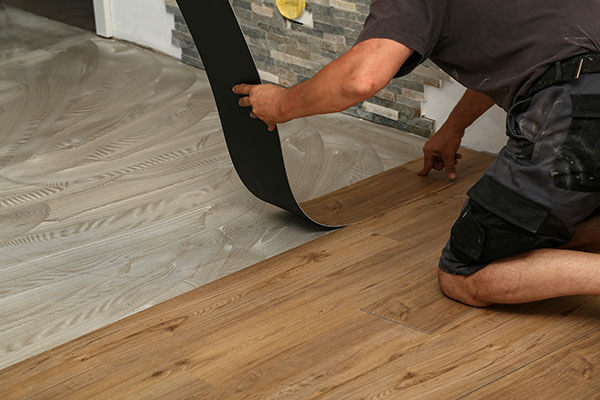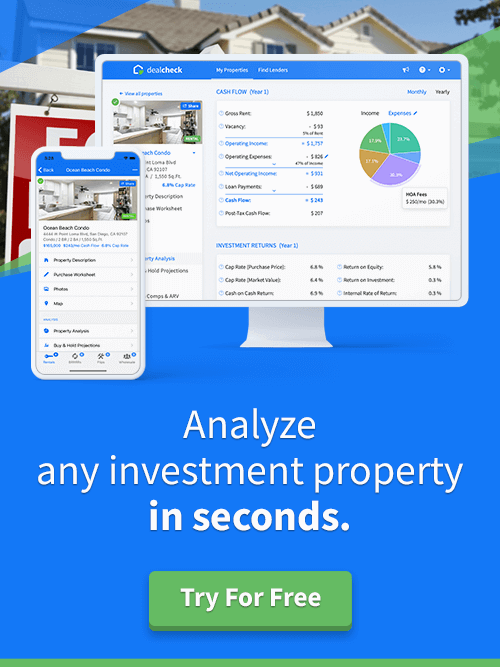The following is a post written by Luke Babich, a guest contributor to the DealCheck blog.
After several years of booming sales and profits, the house flipping market has finally started to cool off. A recent ATTOM report looking into flipping activity found that sales of flipped homes have declined to a six-year low, and profit margins in many markets have shrunk significantly.
Digging into the numbers reveals that while an average flipped home (defined as any property purchased and then later sold within a year) was bought for $260,000 and sold for $325,000, this 25% return on investment (ROI) represented a steep decline from the 50% ROIs investors were seeing in late 2020.
The reasons for this are relatively clear: in a “hot” real estate market, it may be easier to sell your house for a premium price, but it is also a lot harder to find undervalued bargains that make successful flips. Additionally, higher mortgage rates have made financing harder and more expensive.
Still, flipped homes accounted for 8.3% of all US home sales in the first quarter of 2025, so it remains a significant segment of the market. That means there’s still a lot of profit to be made from flipping in today’s hypercompetitive, high-rate market – it’s just going to take a smarter approach.
Here are a few tips to help you adjust your flipping strategy, find better deals, and increase your take-home profit:
Follow the Money
The ATTOM report highlights big differences between two types of markets. On one hand, you have mature, established areas that have reached a plateau. Investors saw very low ROIs in markets like Austin, TX (1% ROI), Houston, TX (5% ROI) and Dallas, TX (3.7%). There simply aren’t many cheap, undervalued homes left in these cities.
On the other hand, some “Rust Belt” and Midwest cities are still delivering strong returns. For example, Buffalo, NY, had the country’s highest average ROI, at 102.1%, while Pittsburgh, PA came in second at 100.4%. In Illinois, cities like Rockford (87.7% ROI) and Peoria (89.1% ROI) are showing high returns as well.
If you are an investor operating in a market with declining ROIs, you may want to consider relocating your operation to a city with greater growth and return potential, if the costs of such a move make sense in the long run.
Get Creative With Deal Sourcing
The foundation of any house flipping operation is to buy low and sell high. While it can be harder to find great deals in this environment, they’re still out there.
Try monitoring social media websites for fixer-uppers, and search online for distressed properties and pre-foreclosures. Look for sellers who are selling their home without an agent, and research Airbnb neighborhoods where declining popularity might be pushing short-term rental investors to sell. Motivated sellers are an excellent source for undervalued properties.
Another great strategy is connecting with local wholesalers in your market, who can often provide a great way to acquire off-market properties at a discount.
Go for Higher Volume
While flipped homes made up just over 8% of all sales nationally, some markets saw much higher concentrations of flipping activity.
In Macon, GA, a stunning 21% of all home sales were flipped properties, while over a fifth of all home sales in Warner-Robins, GA (20.6%) were flipped. Even Atlanta, GA, which has been booming for years, saw a 15.9% share of flips being sold.
While in the past, some flippers may have preferred to focus on a few methodical flips per year, many are switching to a volume-focused strategy, where they flip 10 or even 20 homes per year. A higher volume of flip projects can help offset lower ROIs that many flippers are seeing nowadays.
Be Flexible
Many successful house flippers tend to have a well-established routine and set rules. They work with the same contractors on the same types of projects, target specific neighborhoods consistently, and adhere to rules such as the 70% ARV standard. However, in a changing market, your strategies often need to be adapted, and it’s important to remain flexible.
The 70% rule, for example (which states that you should cap your purchase price at 70% of a home’s after-repair value, minus renovation costs), isn’t always effective in every situation. In more competitive areas, when you are bidding against other investors, you may need to aim for something like an 80% ARV target.
On the other hand, if you find yourself in a slower market or season, that target could be adjusted down to 60% to increase your profit margins. It’s very helpful if you have a deep, up-to-the-minute understanding of your local market to make these kinds of adjustments on the fly.

Crunch Your Numbers
Investors can sometimes forget that every dollar they spend on renovations, holding costs, or other expenses is a dollar lost in profit. You should regularly review your expenses to identify opportunities for cost savings.
Are your contractors charging reasonable rates? Are you paying people to do simple work like painting or landscaping that you could potentially handle yourself? How close are your final profit numbers to your initial projections? How accurate are your budget estimates? Are you taking into account rising insurance and financing costs?
If you find yourself repeatedly over budget or are finding it difficult to analyze potential flips with your existing tools, try DealCheck’s house flipping calculator, which is used by hundreds of thousands of flippers and investors on a daily basis. Not only will it help you itemize and forecast your rehab costs, but it can also assist with property valuation and calculating the maximum allowable offers to sellers.
Time the Market
While nobody can predict the future, it is often helpful to review the latest economic forecasts and buyer sentiment surveys, and compare them to typical buying patterns in your local market.
For example, if you finish a flip during an unfavorable time or season, it may be worth holding on to the property for a few months longer. The increased holding and carrying costs will often be offset by a higher final sale price.
You can even explore short-term rental strategies to generate some cash flow from your newly renovated properties, while you wait for the right time to sell. While this strategy isn’t for everybody, it can be a creative way to boost your returns.
Leverage Modern Tech
There are many ways you can use modern technology to increase your flipping profits and returns.
We’ve already mentioned using DealCheck to help you find, analyze, and compare potential investment properties and markets in seconds, and to help you forecast and understand your profits and returns.
You can also look into incorporating smart home features into your renovations. While installing these gadgets can be more expensive than a quick, basic cosmetic rehab, they have considerable appeal for many buyers.
Similarly, sustainable home features like low-flow kitchen and bathroom fixtures, energy-efficient doors and windows, solar panels, and heat exchangers can be pricey, but in many markets they can significantly increase your property’s appeal and after-repair value.
You can also utilize technology for tasks such as virtual staging when marketing your properties. Instead of spending thousands of dollars on a professional staging service, you can use one of several virtual staging apps for your listings and create attractive 3D house tours that’ll appeal to young, tech-savvy buyers.
Focus on Marketing
In prior years, which were often characterized as being a seller’s market, it was possible to run a successful flip operation without a strong focus on marketing or making a conscientious effort to attract buyers to your properties.
In today’s “cooler” market, however, it is often necessary to beef up your marketing efforts, increase outreach, and ensure that your property listings are seen by the largest number of potential buyers.
You can leverage social media to entice buyers by posting compelling listing photos, video walk-throughs or aerial drone footage of each property. You don’t even need to wait until the property is ready to sell – build anticipation by posting progress updates during a flip, and attract interest before the listing is even live.
Buyer incentives can also work well, such as a free home warranty or offering to cover some or all of the buyer’s closing costs. In uncertain and competitive markets, some buyers simply need a little nudge to commit to a deal.
Don’t Give Up – Adapt Instead
It can be discouraging to see your flipping profits and margins erode because of the lack of deals, higher interest rates, higher carrying and holding costs, and longer sale cycles.
But it’s important to keep in mind that the real estate market is dynamic and cyclical in nature, and it’s important to adapt your methods and strategies to the changing market conditions.
By staying flexible and creative, you can often succeed and thrive, while many other investors are throwing in the towel.

Luke Babich is a licensed real estate agent and is the co-founder of Clever Real Estate, a real estate education platform committed to helping home buyers, sellers and investors make smarter financial decisions.


